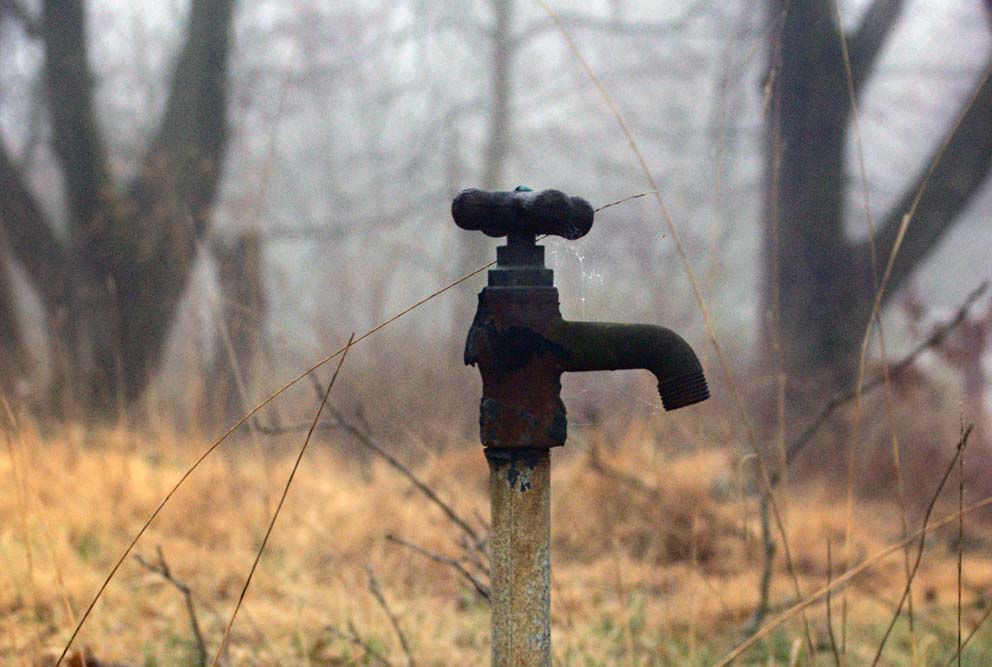Your Cart is Empty
December 15, 2021 3 min read

Heavy metals are often thought of in terms of chemistry class or rock concerts… not often are they thought of as something drinkable. The obvious reason behind this is that heavy metals are not meant to be consumed. Unfortunately, just because they are not meant to be consumed does not mean their consumption doesn’t happen, oftentimes with disastrous results. Then why might someone consume these metals?
The short answer is people do not know they are drinking heavy metals. Heavy metals can be found in tap water, but because they are undetectable to the human eye, people do not realize the threat they hold. Heavy metal contamination leads to a wide variety of health risks, from cardiovascular disorders to nerve damages to cancer. Without proper water filtration, heavy metals enter households unknown and wreak havoc on unsuspecting consumers.
Heavy metals are metallic elements high in toxicity that initially live under the earth’s crust, but due to “indiscriminate human activities… they enter our drinking water supply.” Human activities bringing heavy metals into the water supply include agricultural pesticides and chemical manufacturers that collect metals in groundwater. However, residential neighborhoods are not immune to heavy metal contamination, as old pipes, sewer lines, and septic tanks can also contribute to heavy metals entering the water supply.
No matter the source of the pollutants, heavy metals, specifically mercury, lead, and cadmium, all lead to human poisoning. They affect cellular functions like growth and damage-repair, and each individual metal comes with additional risks, as well. Mercury poisoning, for example, is associated with lack of coordination, muscle weakness, nerve damage, and hearing difficulties. Lead poisoning, one of the more well-known heavy metals due to the ongoing water crises in Michigan, leads to countless developmental issues in children, as well as behavioral changes, high blood pressure, and anemia, among other symptoms. Cadmium poisoning can often be detected through symptoms like fever, trouble breathing, and muscle pain. Oftentimes heavy metal poisoning does not come gradually, but instead it will remain undetected until the symptoms hit with full-force. The dangers they present cannot be ignored, and it is up to the individual to protect themselves from heavy metal poisoning.
To better protect oneself from the dangers of heavy metal poisoning, experts suggest filtering tap water before drinking it. As of now, urban, rural, and residential areas alike experience the presence of heavy metals in their tap water supply. In terms of heavy metal filtration, Seychelle water filters are independently lab-tested to remove over 99% of heavy metals from water. Investing in a Seychelle filter is investing in the guarantee that water will be safe to drink, free of metal… just like it should be.
Frequently Asked Questions
What are heavy metals?
Heavy metals are highly toxic metals found beneath the earth’s crust. Due to human activity, these metals have resurfaced and made their way into water supplies. Some of the heavy metals of greatest concern to health are lead, cadmium, and mercury.
Why are heavy metals harmful?
Heavy metal poisoning takes on many different forms. While low exposure to heavy metals may lead to mild symptoms like vomiting, frequent exposure to heavy metals can lead to cellular, liver, and cardiovascular damage and cancer.
How can I protect myself from heavy metals in tap water?
Unfiltered tap water increases the likelihood of exposure to heavy meals, which is especially dangerous to children and those drinking tap water frequently. However, using a water filter like those Seychelle offers allows consumers with the peace of mind that their tap water is purified and metal-free.
Works Cited
Balali-Mood, Mahdi, et. al. “Toxic Mechanisms of Five Heavy Metals: Mercury, Lead, Chromium, Cadmium, and Arsenic.”Frontiers in Pharmacology,13 April 2021,https://www.frontiersin.org/articles/10.3389/fphar.2021.643972/full. Accessed 6 December 2021.
Kent Ro Systems. “Harmful Effects of Heavy Metal Contamination in Drinking Water.”Kent Health Care Products,25 March 2017,https://www.kent.co.in/blog/harmful-effects-of-heavy-metal-contamination-in-drinking-water/. Accessed 6 December 2021.
Murrell, Daniel. “Heavy Metal Poisoning.”Healthline,13 December 2018,https://www.healthline.com/health/heavy-metal-poisoning. Accessed 6 December 2021.
“Potential Well Water Contaminants and Their Impacts.”United States Environmental Protection Agency,7 January 2021,https://www.epa.gov/privatewells/potential-well-water-contaminants-and-their-impacts. Accessed 6 December 2021.
Rehman Kanwal, et. al. “Prevalence of exposure of heavy metals and their impact on health consequences.”National Library of Medicine,January 2018,https://pubmed.ncbi.nlm.nih.gov/28643849/. Accessed 6 December 2021.